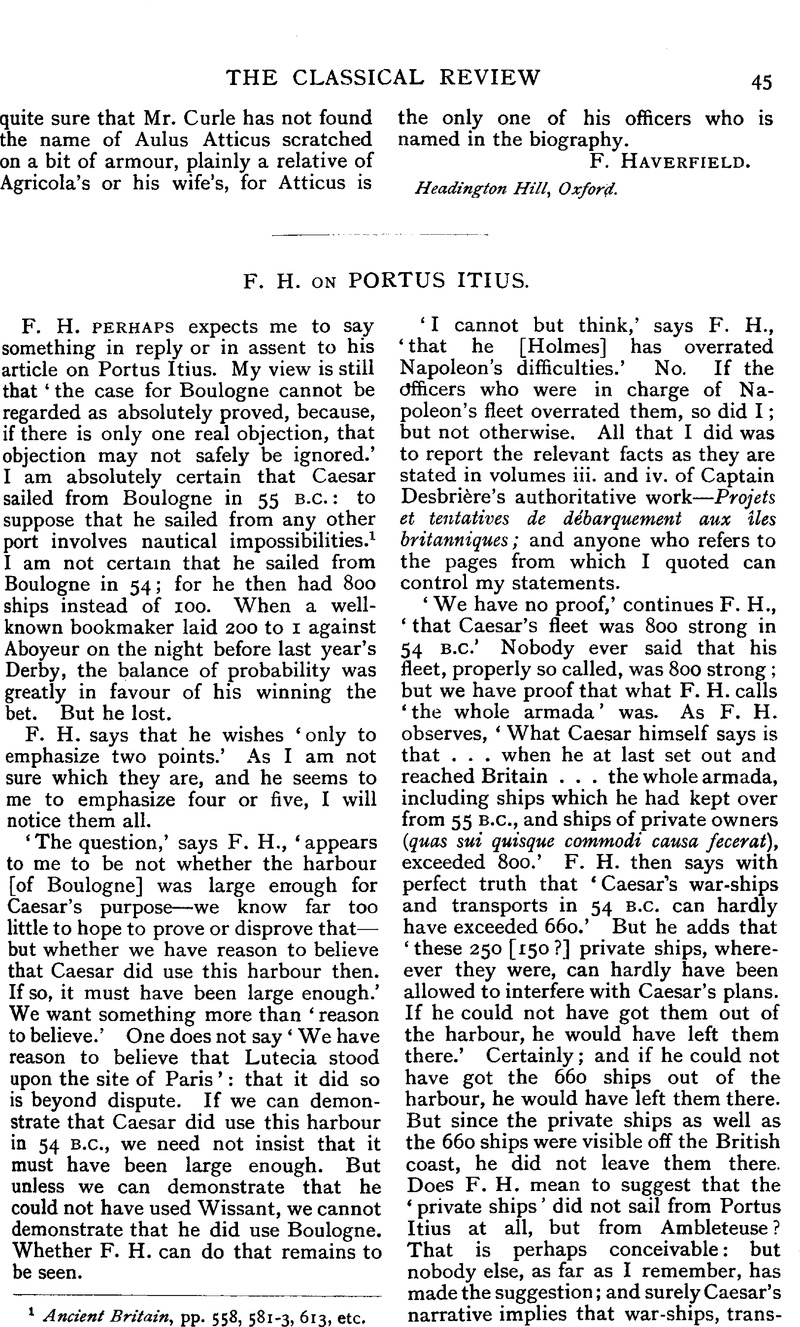No CrossRef data available.
Article contents
F. H. on Portus Itius
Published online by Cambridge University Press: 27 October 2009
Abstract

- Type
- Original Contributions
- Information
- Copyright
- Copyright © The Classical Association 1914
References
page 45 note 1 Ancient Britain, pp. 558, 581–3, 613, etc.
page 46 note 1 Matthaei Parisiensis Chronica Maiora, ed. Luard, H. R., iv. 238–239Google Scholar.
page 46 note 2 Information about the harbour, such as it was, the sand dunes, and the period of their formation will be found in my books.
page 46 note 3 Bouquet, M., Recueil ties hist, des Gaules, xiGoogle Scholar. 40C.
page 46 note 4 Oeuvres de Froissart, — Chroniques, ii. 109 (ed. de Lettenhove, Kervyn)Google Scholar.
page 46 note 5 Gesta regis Henrici secundi Benedicti abbatis, ed. Stubbs, W., i. 60Google Scholar.
page 46 note 6 Radulfi de Diceto … opera hist, ed. Stubbs, W., i. 377Google Scholar. In Ancient Britain, p. 580, I remarked that ‘Benedict does not say that the army set sail from Wissant.’ This is true, but irrelevant; for Benedict says that the earl landed cum infinito exercitu; and Ralph says that he sailed from Wissant.
page 46 note 7 In the index of Benedict's work Wissant is mentioned in connexion with thirteen voyages, Boulogne with none; in the index of Hoveden's Wissant with eight, Boulogne with none; in the index of Matthew's Wissant with three, Boulogne with one.
page 46 note 8 M. Bouquet, xi. 133C.
page 46 note 9 Chronica … Rogeti de Houedene, ed. W. Stubbs, ii. 302, 317.
page 46 note 10 Ib., p. 192.
page 47 note 1 Oeuvres de Froissart, ii. 191, 194, 227, 232.
page 47 note 2 Oeuvres de Froissart, v. 81–2.
page 47 note 3 ‘ 80 M3’ means 80 cubic metres. One cubic metre contains 1,000 litres, or about 222 gallons.


